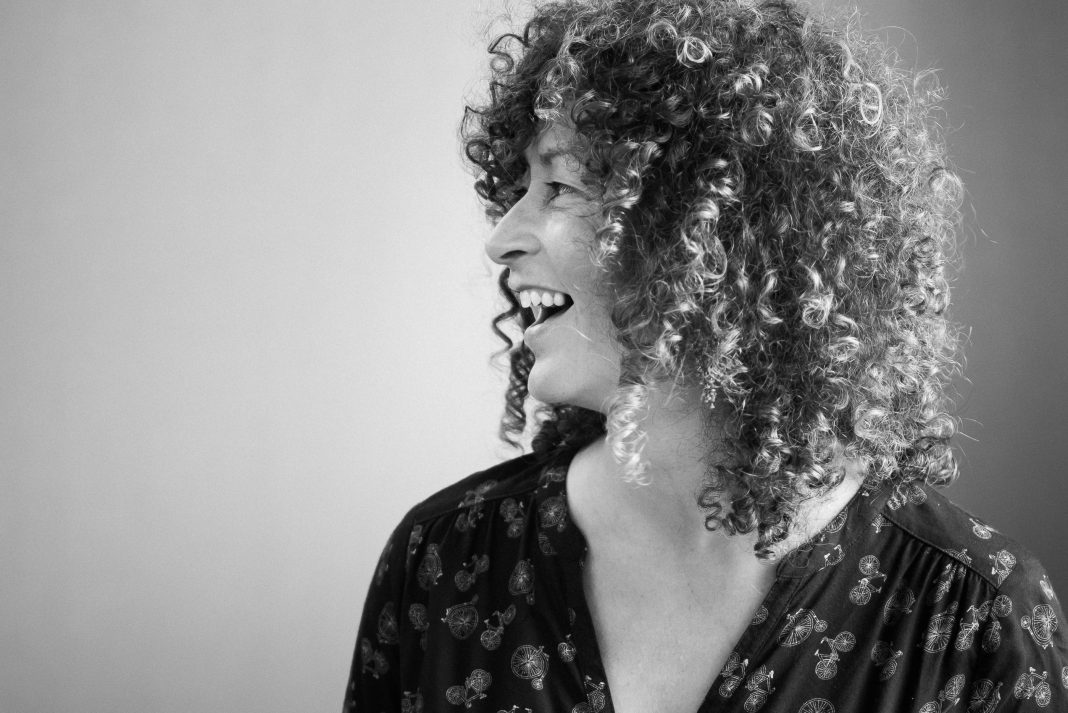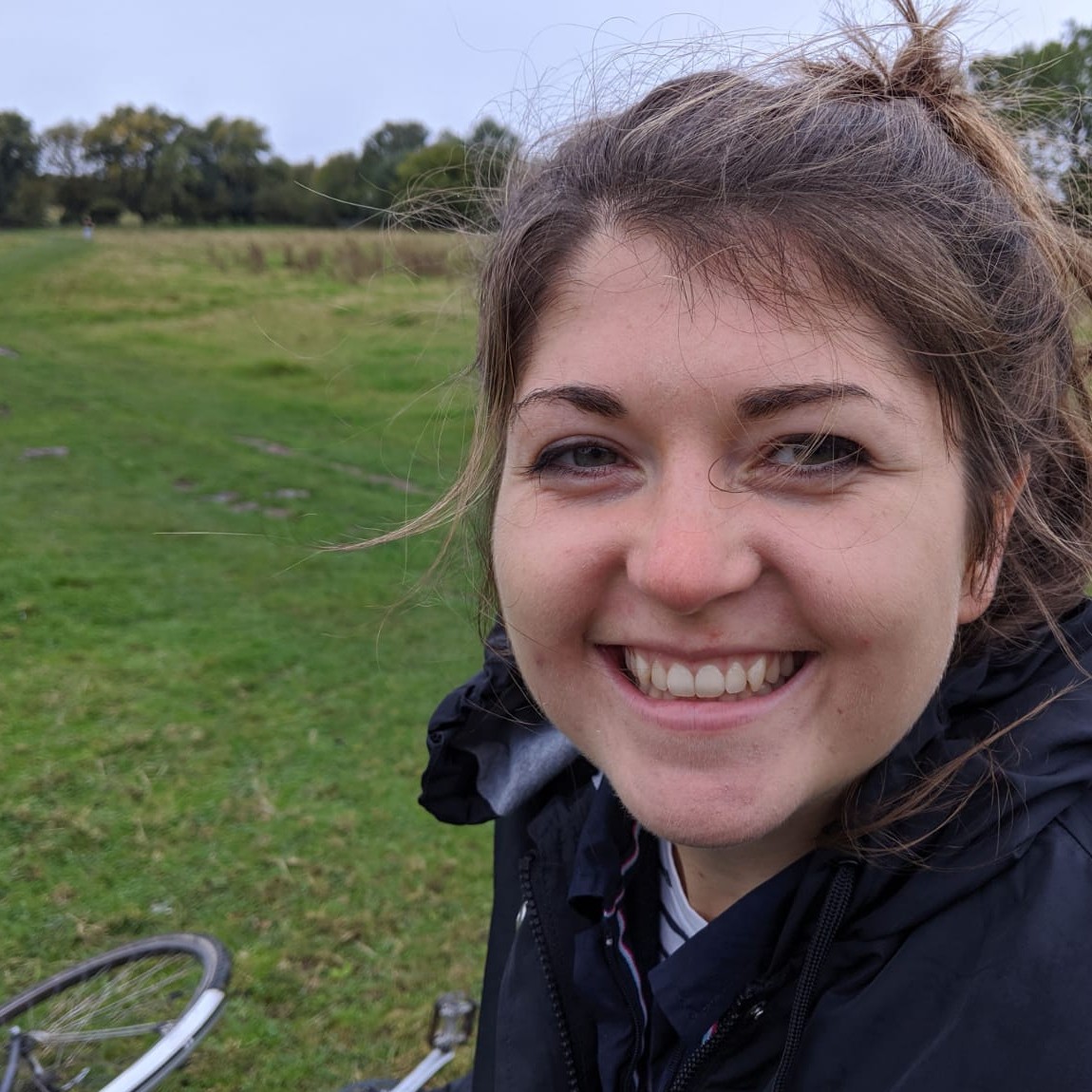From corporate, to bicycle mechanic, to founder of ‘Get Women Cycling’, Angela Azzolino has experienced New York’s streets as a cyclist from different perspectives. We caught up with her to discuss helmet hair and the gender cycling gap, her scepticism of bike lanes and how she teaches driving schools to care about bicycles.
Angela’s Story: “I Was Seeking Comfort”
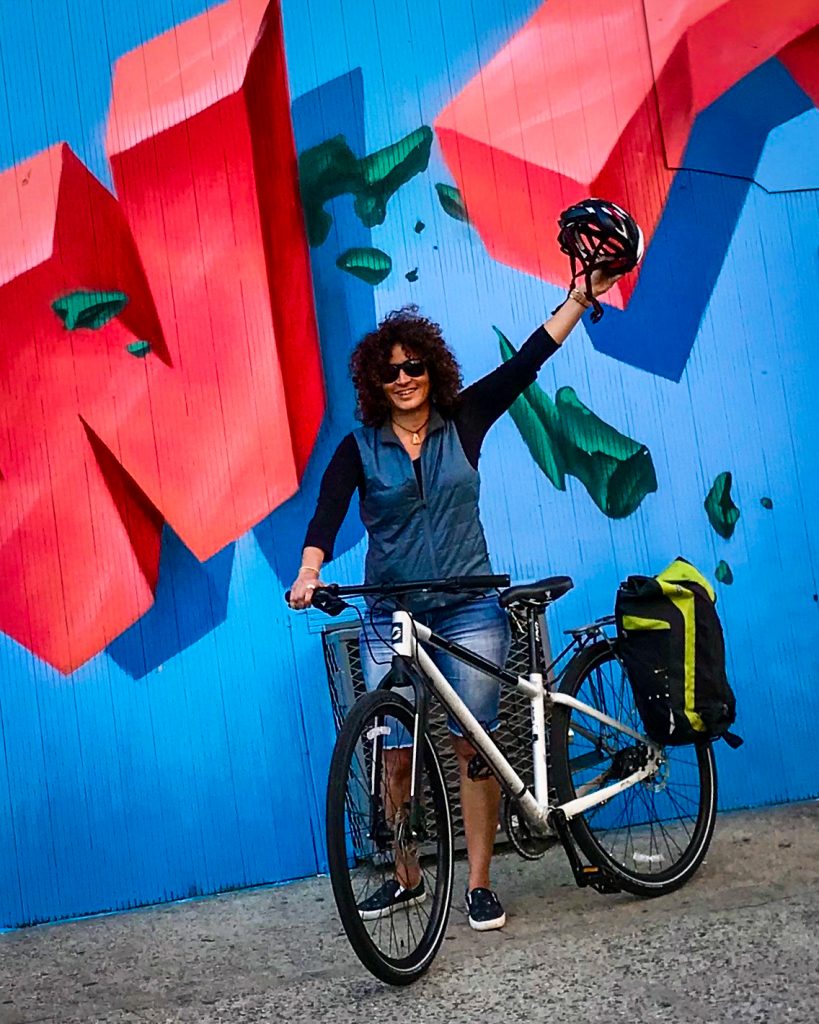
Having come from a corporate background, Angela started volunteering within New York’s bike community after a beloved member of her family passed away unexpectedly. Angela explains that her death “brought home the fragility of life and the importance of spending time with a community that offers growth, support and comfort. Bicycles have always given me that”.
Soon after, Angela started working as a bicycle mechanic. “It really opened my eyes to see that there was a problem,” she explains, “the industry is male dominated. When women came into the shop, you could tell from the body language the discomfort. In conversations there were disconnects and often many left without a purchase.”
Intent on making cycling more inclusive, Angela established ‘Get Women Cycling’ in 2015. With global participation, the organisation aims to elevate female cycling ridership through education, personalised consultation on bike use, service reform and awareness campaigns.
The Gender Cycling Gap and How to Embrace Being a “Sweaty Mess”
Asked why the gender cycling gap exists, Angela points to fear of being hurt by traffic as the most significant reason. She states that whilst all demographics are fearful, “the difference is that men take the risk. Women tend not to, which goes back to our patriarchal society and social norms in which women ask the question ‘if I get hurt, who takes care of the family?’”
Secondly, she argues low self-esteem shrouds female cycling. Often, women do not believe they have the physique or industry knowhow of someone who cycles. As these doubts tumble out, they form a barrier to entry for female cycling. Products, such as cargo bikes, female bikes, attachable grocery bags or child seats, are also less accessible as they quickly sell out.
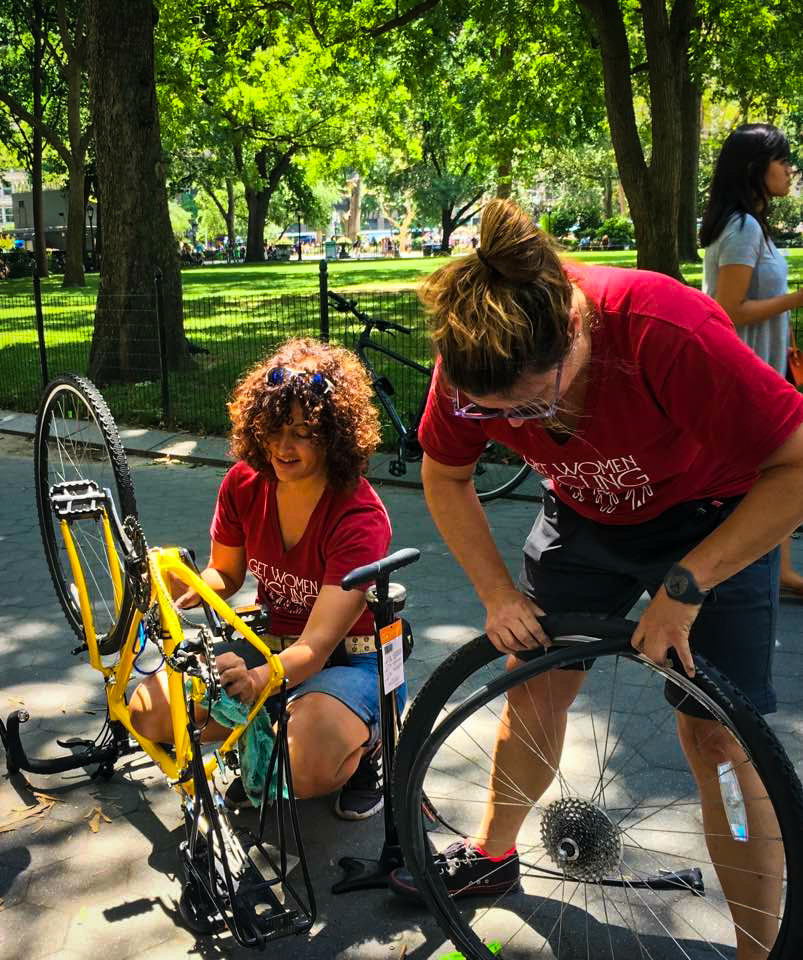
Image credit: Minda Gralnek 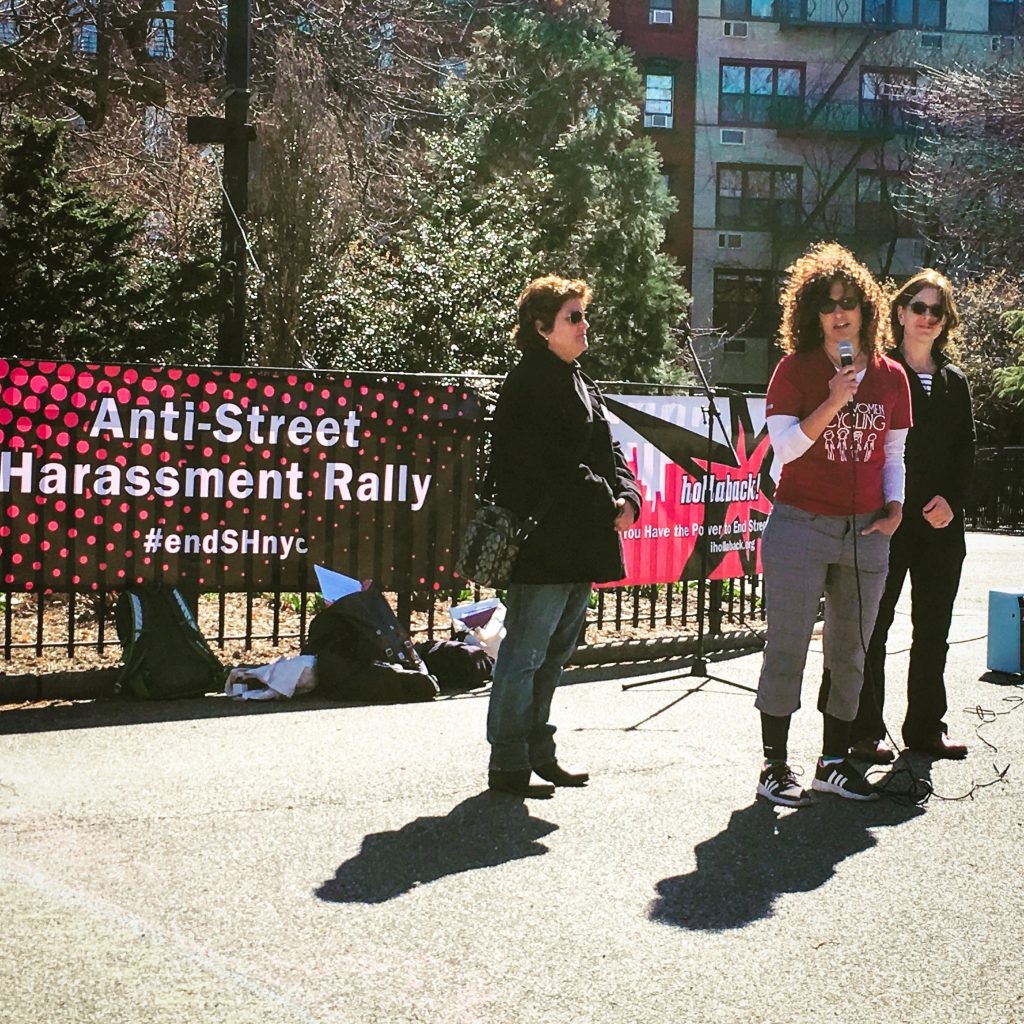
Image credit: GWC Anti Street Harrassment Hollaback 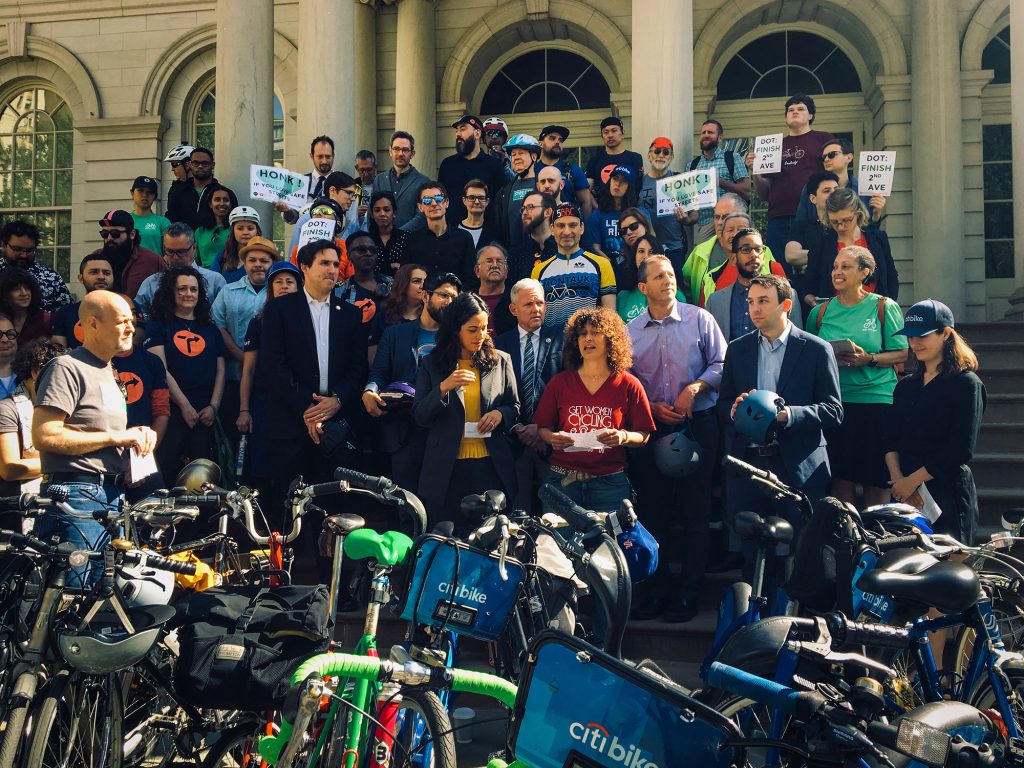
Image credit: GWC Advocacy CityHall
In order to address the gap, Angela argues that female empowerment through knowhow transfer and sharing experiences is most effective. Under the #ShowMeHelmetHair, followers can share their helmet hair photos, generating ownership over a traditional deterrent to cycling and demonstrating to other women that being a ‘sweaty mess’ is nothing to be ashamed of. Get Women Cycling have also launched a zoom series called ‘Ask a Wrench’, where riders can ask a female mechanic questions in a supportive environment, enabling them to feel confident in the cycling space.
Interestingly – and perhaps unexpectedly – Angela is not an advocate of separated bike lanes, despite this being an apparently easy way to dilute traffic safety concerns.
The Controversy With Bike Lanes – “Separation Isn’t Healthy”
“In theory a protected bike lane sounds great, but in practice it’s such a small lane to operate in,” Angela states as she begins to etch out the issues with separated cycle lanes. With the increase in bicycles, skateboards, scooters, e-bikes and cargo bikes, squeezing everyone into a four-foot lane can actually make it less safe, not more.
This is confounded by the lack of maintenance of lanes; with wet leaves, potholes, glass, oil slicks and only a small space to navigate, it can become a deterrent to cycling. Moreover, cycle tracks have to be continuous, otherwise riders still have to face the road anyway.
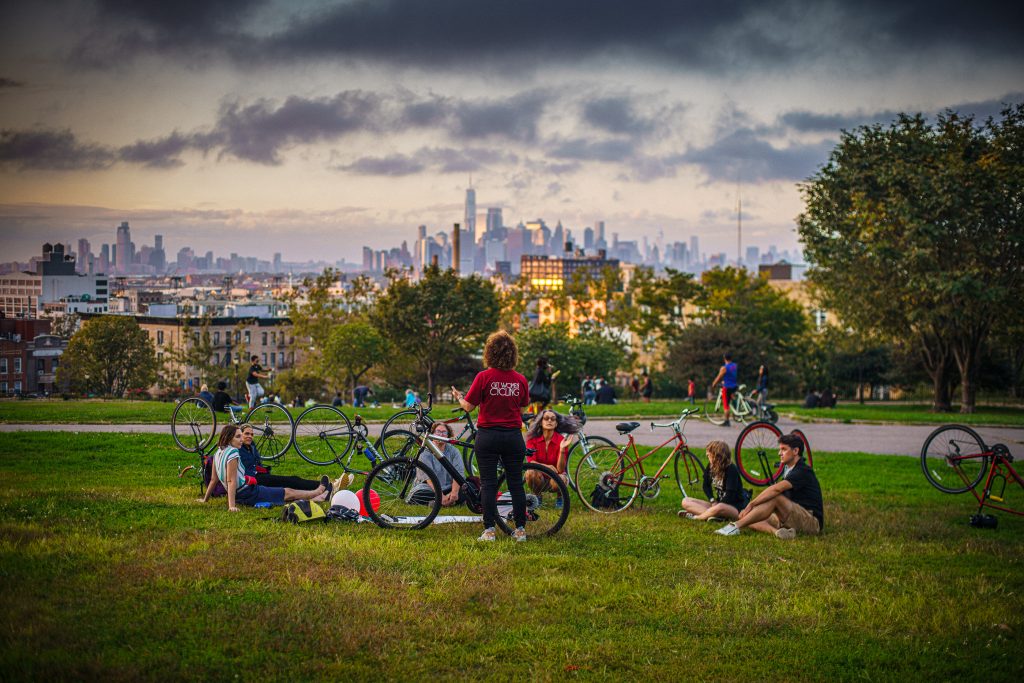
Most striking, however, is her claim that the “separation is not a healthy separation. The more local government separate us, it becomes increasingly difficult for the bicycle to be recognised as a true vehicle.” Since we already have roads, she argues, these should be seen as spaces for all users – rather than elevating the car to a status of superiority. “The car is the problem, but no one is going in that space”.
As a result, Angela is now a certified NYC driving instructor and delivers classes to drivers and driving instructors on cycling awareness. She believes this is the best way of increasing safety and promoting cycling. But getting the kings of the road to see perspective is no easy task.
How to Talk to Drivers – Creating That “Aha” Moment
“Listen, I’m a person. I drive a car, I ride a bike, and I walk – it’s a choice.” This is how Angela begins her lessons as an instructor for New York’s Point and Insurance Reduction Program.
“It’s all about language”, she says “Get away from driver v. cyclists because it creates separation.” Expect the unexpected, slow down, overtake generously and use the Dutch reach are all lessons that Angela advocates. Particularly important is bringing a sense of perspective and creating a common understanding about other users on the road. To do this, Angela shows the drivers that the width of a tyre is the same length as their thumb. “That’s it,” she says, “It’s that much rubber on asphalt to navigate the same streets that you as a person driving a car with four tyres has.”
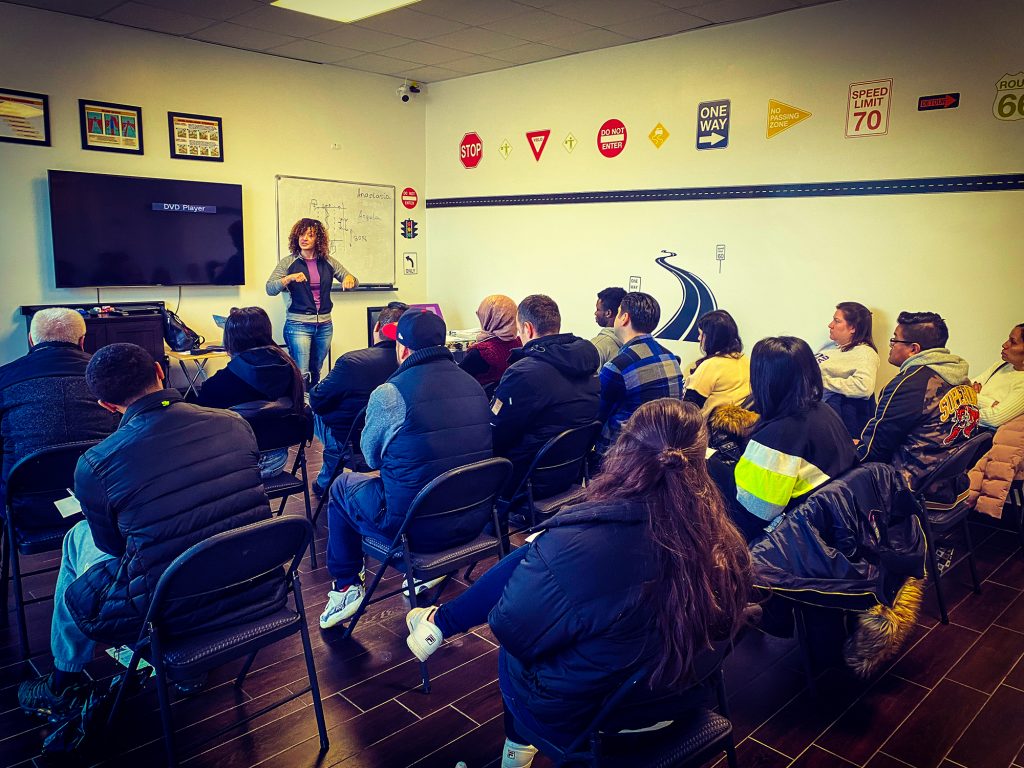
With a 90% positivity rating, drivers have been listening – “they kind of have this ‘Aha’ moment,” Angela says, “Even though they still might not like people on bikes, at least they have a good understanding of what that person is experiencing.”
However, cycling awareness is still not part of America’s national driving curriculum so Angela’s classes are far from mandatory. This is disappointing, she argues, because as commuting changes towards cycling, governments need to get serious about education if their safety is to be ensured.
Angela’s Advice to CityChangers
For others hoping to make changes in their cities, Angela offers this advice: “Follow your passion, look for gaps that need to be filled, listen to those who have different points of view, and have patience.”
In a Nutshell…
Angela’s story shows that comfort can be found within the cycling community, women are not alone in cycling and car drivers can learn to share the road. From corporate, to wrench, to campaigner, Angela’s journey in making New York City’s streets more bike friendly is still unfolding.

